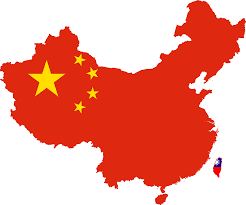Fidelity China Special Situations PLC (LON:FCSS) has announced its Annual Report for the year ended 31 March 2025.
Financial Highlights:
- The Board of Fidelity China Special Situations recommends a final ordinary dividend of 8.00 pence per share as well as a special dividend of 1.00 pence per share.
- During the year ended 31 March 2025, the Company reported a Net Asset Value (NAV) total return of +31.5% and share price total return of +35.8%.
- Over the same period, the benchmark index, the MSCI China Index, returned +37.5%.
- Improving sentiment following stimulus packages and the emergence of artificial intelligence provided catalysts to returns.
CHAIRMAN’S STATEMENT
I have pleasure in presenting the Annual Report of Fidelity China Special Situations PLC for the year ended 31 March 2025.
After three consecutive years of flat or negative returns for UK investors in the Chinese equity market, it is pleasing to be able to look back over a more positive period. In the reporting year to 31 March 2025, the net asset value (“NAV”) total return of your Company was +31.5%, while the Benchmark Index (MSCI China Index (in UK sterling terms)) returned +37.5%. The share price total return was +35.8% boosted by the share price discount to NAV narrowing from 10.2% at the beginning of the period to 7.3% at the year end.
This year marks the 15th anniversary of the Company’s inception on 19 April 2010, and while returns for the year under review have modestly underperformed the Benchmark Index, in absolute terms they have been the strongest since 2021. On an annualised basis, total returns since inception have been well ahead of the Benchmark, at +8.7% for the NAV and +8.2% for the share price, compared with +4.5% for the Benchmark. This is a strong endorsement of the strategy launched by Anthony Bolton and developed over the past 11 years by your current Portfolio Manager, Dale Nicholls. To mark the occasion of the anniversary, on 22 April I was joined by Anthony, Dale, my predecessor as Chairman, Nicholas Bull, and the first Chairman of your Company, John Owen, to open the day’s trading at the London Stock Exchange.
At a macroeconomic level, we have seen the investment backdrop evolve over the year under review with a change in the attitude of the Chinese government, which is looking to stimulate the economy far more overtly following its sluggish post-Covid reopening. Measures to date have included a recapitalisation of banks to support the economy, as well as government-subsidised trade-in schemes for older discretionary items such as white goods.
There have been a number of important events in the last year, but I would like to highlight three. The first is President Xi’s meeting in February with Chinese entrepreneurs at a symposium of private enterprises. In the past, the Chinese government has been seen as sceptical of such businesses, but this gathering would seem to show a genuinely renewed commitment to embracing the role of private enterprise and entrepreneurs as part of China’s future.
The second is DeepSeek – the headline-grabbing generative AI app that got the world’s attention in January, having invested less and provided arguably a better product than US peers. Far from being an anomaly, this is a typical example of Chinese enterprise and science-based invention.
The third is electric vehicle (EV) maker BYD’s revenues overtaking Tesla’s for the first time recently. These factors, and others, have helped improve sentiment, which is also reflected in the 38% rise in the stock market. This strong performance is particularly encouraging given the prevailing high levels of geopolitical uncertainty.
Dividends are also becoming more of a feature of the stock market, associated with generally more shareholder-friendly behaviour by Chinese companies. This year will be a bumper year for dividends received and paid to our shareholders (see below), making a meaningful contribution to the total return.
As I have noted before, being structured as a closed-ended investment company means that Dale does not have the liquidity constraints of an open-ended fund and can use this flexibility to invest in less liquid assets with a longer-term view of returns. Up to 15% of Net Assets plus Borrowings may be invested in unquoted companies (those not yet listed on a stock exchange), allowing Dale to take advantage of the faster growth trajectory of earlier-stage businesses before they are potentially listed on the public markets. Following on from three IPOs of private holdings in the previous financial year, the autonomous driving specialist Pony.ai floated in the US stock market in November. Dale also added a new unquoted holding to the portfolio in February 2025, investing in Fujian Yangteng Innovations which sells private-labelled aftermarket auto parts online in Europe and North America. He also increased the position in ByteDance, the social media company whose assets include TikTok; it is now the largest unlisted holding in the Company’s portfolio. More details of the unlisted holdings, which make up 9.6% of the total Net Assets at the year end and have added materially to your Company’ performance over time, are in the Annual Report.
The Board feels the valuation process for our unlisted holdings is robust. They are assessed regularly by Fidelity’s dedicated Fair Value Committee (“FVC”), with advice from Kroll, a third-party valuation specialist, as well as from Fidelity’s unlisted investment specialist in Hong Kong and the Fidelity analysts who undertake research on the companies. The valuation process is set out in more detail in the Annual Report. The Board receives regular updates from the FVC, with Alastair Bruce, our Audit and Risk Committee Chairman, also providing expertise in this area, having for many years been involved professionally in private equity investing.
DUE DILIGENCE TRIP
In November, your Board was fortunate to visit China to see Fidelity’s investment team in action and meet with some of the portfolio companies on the ground. One of our overriding impressions, which has gained even greater relevance in recent weeks, was of China being potentially better prepared than others for a more fractious global trade environment. A lot of the mitigating actions by companies to reduce the risks from increased tariffs and to diversify their production bases have already happened. That is not to say that the economy will not be harmed by a slowdown in trade with the US, but China has consciously reduced its dependence on critical US imports over the last eight years.
We were most impressed by the entrepreneurialism shining through in the management teams that we met, many of whom were young, energetic, science-based and looking to build global businesses. China is emerging as a world leader in certain sectors, such as EVs, autonomous driving and the range-finding laser technology Lidar, which is an essential tool for autonomous vehicles.
We were struck both by the strength of balance sheets of Chinese companies and the propensity of their major shareholders to reinvest in their businesses and not seek to extract value from them. Their drive and motivation seem to be to build something important and sustainable for the future.
GEARING
Your Board continues to believe that the judicious use of gearing (a benefit of the investment company structure) can enhance returns, although being more than 100% invested also means that the NAV and share price may be more volatile and can accentuate losses in a falling market, as well as being additive on the upside. Having repaid the Company’s US$100m loan in the last financial year, gearing this year has been solely through contracts for difference (“CFDs”), which tend to be at lower costs than prevailing longer-dated borrowing. However, your Board continues to review the position, and we have not ruled out reintroducing an element of fixed rate gearing in the future, should the terms become favourable.
Gearing remained broadly around the 20% (net market gearing) level during the year, beginning at 20.8% and ending at 20.9%, reflecting Dale’s view that the Chinese equity market remains very attractively valued and offers many interesting investment opportunities. This level of gearing is at the upper limit that is acceptable to the Board, compared with a historical range of 10-25%. The impact of gearing was positive during the year in review, adding 6.9% to returns.
DIVIDEND
The Company’s investment objective remains focused on achieving long-term capital growth; however, it has the enviable track record of having paid an increased dividend each year since inception, growing from 0.25 pence per share in 2011 to 6.40 pence in 2024, which is a compound annual growth rate of 28.3%.
As noted above, the year under review was a particularly strong one for the Company’s revenue return, reflecting the increasing focus of Chinese companies on rewarding minority shareholders through dividends. Your Board is therefore pleased to recommend an increased final ordinary dividend of 8.00 pence per share, a 25.0% increase on the 6.40 pence per share paid in 2024. In addition, in light of a large exceptional dividend received from the Company’s position in Lufax Holding, an online finance marketplace, we are proposing an additional special dividend of 1.00 pence per share. By choosing to pay both a final and a special dividend, your Board seeks to pass on the benefit of large one-off receipts, while also safeguarding the Company’s ability to continue to grow its ordinary dividend at a sustainable rate in the future.
Both the ordinary and special dividends will be payable on 31 July 2025 to shareholders on the register on 20 June 2025 (ex-dividend date 19 June 2025).
The revenue per share earned by the Company during the year was 10.18 pence including the Lufax exceptional dividend, and is an increase of 76.1% compared with the 5.78 pence earned in the prior year. This year’s dividend is fully covered by revenue from earnings, and we have been able to add back £7,727,000 to the revenue reserve, which now stands at 5.59 pence per share.
DISCOUNT MANAGEMENT
Although your Company’s share price discount to NAV narrowed during the year from 10.2% to 7.3%, for much of the period it remained higher than the Board would like, and therefore we have been relatively active with share buybacks, repurchasing 30,841,184 shares (5.9% of the total at the start of the year) for cancellation. It is always our ambition that the share price should closely match the company’s NAV. We remain vigilant of changes in sentiment towards China and the impact that has on demand for the Company’s shares and, in turn, on the price at which they trade. In the early part of the review period, the market at large remained wary of China given the sluggish economy and ongoing issues in the property market. However, stimulus measures announced by the Chinese government in the last quarter of 2024 created a reassessment, and the discount to NAV narrowed accordingly, reaching the mid-single digits towards the year end, despite the uncertainty surrounding President Trump’s trade tariff plans. It is encouraging to note that it remains in single digits at the time of writing, suggesting investors remain relatively sanguine about the potential impacts of a trade war between China and the US. The graph below shows the movement of the Company’s discount during the year.
While the primary purpose of share repurchases is to limit discount volatility, they are also of benefit to existing shareholders, as the Company’s NAV per share is increased by purchasing shares at a discount.
ONGOING CHARGES RATIO AND MANAGEMENT FEE
The Ongoing Charges Ratio (the costs of running the Company) for the year was 0.89% (2024: 0.98%). The variable element of the management fee (due to underperformance of the Benchmark Index on a rolling three year basis) was a credit of 0.15% (2024: a charge of 0.15%). Therefore, the Ongoing Charges Ratio for the year, including this variable element, was 0.74% (2024: 1.13%).
Following a reduction in the base management fee paid to the Manager in the last financial year as a result of the combination with abrdn China Investment Company (ACIC), there have been no further changes to the fee arrangements in the year under review.
BOARD OF DIRECTORS
There have been no changes to your Board of Directors in either of the last two financial years, and other than me, none of the Directors have served for more than five years, meaning there are no changes expected in the shorter-term. We are pleased that your Company’s Board includes a real diversity and balance of relevant skills and experience, including consultancy covering Chinese businesses, accountancy, investment management (including private equity and private equity valuation) and marketing. In recent years, we have sought to pass on the benefit of our accumulated skills and knowledge by taking on a Board apprentice, a role put in place to help develop the next generation of individuals who may not otherwise find a route to becoming a non-executive director. Each apprentice serves a term of one year, during which time they attend all Board and Committee meetings as an observer. Further details are in the Annual Report.
In accordance with the UK Corporate Governance Code for Directors of FTSE 350 companies, all Directors are subject to annual re-election at the Annual General Meeting (“AGM”) on 24 July 2025, in order to continue to support and oversee the Company in the best interests of all shareholders. The Directors’ biographies can be found in the Annual Report.
ANNUAL GENERAL MEETING
The Company’s AGM is at 11.00 am on 24 July 2025. The meeting will once again be a hybrid format, with online attendance available; however, I hope to see as many of you as possible in person on the day. Alongside the direct email updates that we now provide, it is one of the few opportunities in the year to sit down together – shareholders, the Board and the Manager – to talk about your investment. Of course, this year has particular significance, as we mark the Company’s 15th anniversary. Please do join us if you can. Details of the AGM are below.
OUTLOOK
A year ago, sentiment was undeniably poor – the Chinese economy, stock market and property market were all depressed, and the private sector was not outwardly being supported by the government. While a change in sentiment during the year under review has powered a very strong year for the Chinese stock market, we now need to see the follow-through.
While the macro picture remains uncertain with the property market still struggling and consumer sentiment fragile, the Chinese authorities could pull the lever of more monetary and fiscal stimulus, which could in turn provide a catalyst to unlock the high level of savings accumulated during the Covid lockdowns. The geopolitical backdrop, and particularly the trade issues between the US and China, should not be underestimated, but as confidence in American exceptionalism recedes there is potential for a genuine shift in market sentiment from the US-dominated global equity market to ‘unloved’ China. In the first quarter of 2025, the Nasdaq was down by 15% while Hong Kong’s Hang Seng Index was up by 15%.
While the trade problems may be making headlines, I would posit that the bigger story for the long-term is the Chinese government’s willingness to engage with the private sector and acknowledge the role it has to play in the country’s future prosperity. From a bottom-up perspective, these businesses are vibrant, entrepreneurial and inventive, and the growing dominance of Chinese companies in certain global sectors is likely to be a continuing theme. For many years, people have been used to buying goods that are made in China but with Western brands attached, but now Chinese brands are gaining traction globally. It is no longer rare to see BYD cars on British driveways or Haier and Hisense appliances in European homes. This shows both the quality of the products and the confidence of their manufacturers, both of which are shared by your Board and the Manager. There will be bumps in the road and the Chinese stock market will remain volatile but at the micro economic or company level in China there are positive longer-term trends in place, which your Company is well placed to benefit from.
MIKE BALFOUR
Chairman
9 June 2025
ANNUAL GENERAL MEETING – THURSDAY, 24 JULY 2025 AT 11.00 AM
The AGM of the Company will be held at 11.00 am on Thursday, 24 July 2025 at 4 Cannon Street, London EC4M 5AB (nearest tube stations are St Paul’s or Mansion House) and virtually via the online Lumi AGM meeting platform. Full details of the meeting are given in the Notice of Meeting in the Annual Report.
For those shareholders who prefer not to attend in person, we will live-stream the formal business and presentations of the meeting online.
Dale Nicholls, the Portfolio Manager, will be making a presentation to shareholders discussing the performance of the past year and the prospects for the year to come. Dale and the Board will be very happy to answer any questions that shareholders may have. Copies of his presentation can be requested by email at investmenttrusts@fil.com or in writing to the Secretary at FIL Investments International, Beech Gate, Millfield Lane, Lower Kingswood, Tadworth, Surrey KT20 6RP.
Properly registered shareholders joining the AGM virtually will be able to vote on the proposed resolutions. Please see Note 9 to the Notes to the Notice of Meeting in the Annual Report for details on how to vote virtually. Investors viewing the AGM online will be able to submit live written questions to the Board and the Portfolio Manager and these will be addressed at an appropriate juncture during the meeting.
Further information and links to the Lumi platform may be found on the Company’s website at www.fidelity.co.uk/china. On the day of the AGM, in order to join electronically and ask questions via the Lumi platform, shareholders will need to connect to the website https://meetings.lumiconnect.com/100-135-001-078.
Please note that investors on platforms, such as Fidelity Personal Investing, Hargreaves Lansdown, Interactive Investor or AJ Bell Youinvest, will need to request attendance at the AGM in accordance with the policies of your chosen platform. They may request that you submit electronic votes in advance of the meeting. If you are unable to obtain a unique IVC and PIN from your nominee or platform, we will also welcome your online participation as a guest. Once you have accessed https://meetings.lumiconnect.com/100-135-001-078 from your web browser on a tablet, smartphone or computer, you shouldthen select the ‘Guest Access’ option before entering your name and who you are representing, if applicable. This will allow you to view the meeting and ask questions, but you will not be able to vote.
Further information on how to vote across the most common investment platforms is available at the following link: https://www.theaic.co.uk/how-to-vote-your-shares
PORTFOLIO MANAGER’S REVIEW
QUESTION
How has the investment company performed in the year to 31 March 2025?
ANSWER
As Fidelity China Special Situations PLC reaches the 15th anniversary of its listing on the London Stock Exchange, I am pleased to report one of its strongest annual performances since launch, albeit a volatile one.
The Company’s share price rose by 35.8% over the year, with the discount to NAV narrowing from 10.2% at the start of the period to end at 7.3%. The Company’s NAV returned 31.5%, underperforming the MSCI China Index (the Benchmark Index), which delivered 37.5%. (All performance figures are on a total return basis).
The first five months of the reporting year proved challenging, with a combination of lacklustre economic stimulus, a weak property sector, and subdued consumption in China weighing on investor sentiment. During this period, the equity market eked out a marginal gain, with traditionally defensive sectors, such as energy, utilities, telecommunications, and state-owned banks outperforming. With its typical focus on growth-oriented sectors, the Company delivered a small negative return.
However, sentiment improved sharply in September following a comprehensive stimulus package from the Chinese government aimed at tackling deflation risks and reinvigorating consumption and real estate markets. I believe the size and breadth of the measures, and commitment expressed, marked a turning point in Beijing’s efforts to tackle the key economic issues most on investors’ minds. Equities rallied sharply in the month, led by real estate, consumer-related sectors, and healthcare.
While some of the momentum faded, a second major catalyst followed in January – the announcement of DeepSeek’s ground-breaking artificial intelligence (“AI”) model – reigniting enthusiasm for Chinese innovation and tech stocks. The tech sector led a broad-based rally into the end of the financial year, helping the Company to deliver a strong double-digit return.
While markets have been rocked by renewed US-China trade tensions since the financial year end, I remain confident in the resilience of the companies we own and the longer-term opportunity in Chinese equities.
QUESTION
What stocks have been the main drivers of performance during the year and why?
ANSWER
Performance during the year was driven largely by domestically focused small and mid-cap stocks, financials, and several of the most innovative companies held, particularly those linked to AI and the electric vehicle (“EV”) supply chain.
Against a backdrop of stabilising economic activity, insurers and consumer finance companies delivered strong returns. LexinFintech Holdings, a leading FinTech lender, stood out withrobust profit growth, improved asset quality, and successful execution of its strategic shift toward a more optimised product mix and stronger platform-based revenue. Similarly, Qifu Technology benefited from solid earnings growth, an expandinguser base, and a strong ongoing programme of capital return. As an AI-enabled platform specialising in short-term consumer credit, Qifu has built a leading market position. The stimulus package also lifted sentiment across the broader financial sector, supporting holdings such as Ping An Insurance Company and China Life Insurance.
Investor enthusiasm for AI and digital transformation supported strong returns in holdings such as Alibaba Group Holding, which advanced on rising expectations for cloud platform demand. However, our underweight position relative to the MSCI China Index limited the positive contribution. VNET Group, one of China’s leading Internet Data Centre (IDC) operators, benefited from growing AI-related infrastructure demand.
Other holdings also made meaningful contributions. Medlive Technology, an online professional physician platform, ralliedfollowing the successful launch of new AI driven services and accelerating AI commercialisation efforts. Meanwhile, Kingdee International Software Group, a domestic leader in enterpriseresource planning (ERP) software, gained as it continues to benefit from a broader industry shift toward SaaS (software-as-a-service) models and hope that its AI-enabled features can accelerate penetration and improve pricing.
One of the most innovative and strategically important areas continues to be the EV sector, where Chinese companies are increasingly establishing global leadership. While we acknowledge the significant growth potential for EV manufacturers, my preferred exposure has been through suppliers further up the value chain, where competition tends to be less intense, allowing margins to be more attractive and stable. Holdings in Hesai Group, a leading automotive LiDAR supplier, and Precision Tsugami China, a specialist in high-precision small-size lathe machines, performed well. Precision Tsugami in particular benefited from strong order momentum, driven by rising demand from both the BYD supply chain and from manufacturers of AI server-related cooling systems.
On the other hand, not holding automakers BYD and Xiaomi detracted from performance compared to the MSCI China benchmark index. Xiaomi’s stock surged following the launch of its SU7 EV, which boosted sentiment across the EV space. However, I remain cautious given the competitive intensity in the auto sector along with relatively high valuations. In addition, we continue to believe a key differentiator of the Company — backed by Fidelity’s research and private-market valuation expertise — to invest in unlisted companies broadens the opportunity set and represents an additional source of potential returns for the Company.
TikTok developer ByteDance attracted attention given its role in the strategic tech sector and increasing global relevance, placing it at the intersection of innovation and geopolitical scrutiny. Encouragingly, the company emerged as a strong contributor to performance and our added stake in August last year further enhanced gains. ByteDance continued to deliver solid financial results and international expansion, despite continued uncertainty around TikTok’s US operations.
Conversely, leading autonomous driving player Pony.ai came under pressure post IPO in late 2024, following weaker-than-expected fourth-quarter results, despite this being less relevant given the early stage of this industry’s development. We remain confident in the long-term potential of its business given its strong technology platform and integrated ecosystem.
Overall, the unlisted investments delivered positive absolute returns to the portfolio during the review period, though performance was comparatively muted relative to the benchmark index, which benefited from a sentiment-driven rally fuelled by stimulus measures and AI-related catalysts.
QUESTION
How have you utilised the investment company structure this year? Has it been beneficial?
ANSWER
Net exposure to the market continues to reflect the quality and breadth of investment opportunities available, typically increasing when valuations are attractive and decreasing when opportunities become less prevalent, or valuations more stretched. I have found no shortage of attractive investment opportunities, and therefore net market exposure has fluctuated around 120% during the reporting year – at the upper end of the Company’s target range (previously around 125%). Net gearing was 20.9% at the end of the reporting year, very marginally down from 20.8% at the start.
Importantly, gearing added 6.9% to performance during the year, underlining the value that prudent gearing can bring when used appropriately.
QUESTION
Although President Trump’s “Liberation Day” announcement of higher tariffs came after the reporting year end, what impact have they had so far on the Company and on Chinese equities?
ANSWER
US-China trade tensions were widely anticipated but escalated more than most expected. However, the recent agreement on temporary tariff reductions has offered some relief. While the headline cuts are substantial, tariffs remain materially higher than they were before the so-called “Liberation Day” and have already caused significant disruption for both consumers and companies. The base case is that tariffs will stay around thesenew levels after the 90-day period, but they continue to weigh on the earnings outlook, particularly for certain export-oriented industries.
Companies within the technology hardware and machinery sectors face the most direct pressure, with revenue impacts, given the uncertainty, and potential margin compression on lower utilisation levels as tariff costs ripple through supply chains. In our conversations with companies, few express concerns about losing market share, because these sectors are often already dominated by Chinese firms with similar supply chains. It is more a question of how demand will respond when prices rise.
So, a key part of our analysis centres around questions of price elasticity. I have reduced some exposure to the power equipment sector, where most companies share similar supply chains, with the bulk of manufacturing and sourcing based in China. But companies with diversified production footprints or strong market positioning may weather the impact more effectively over time.
Overall, we expect the direct tariff impact on the Company to be insignificant. The Company remains heavily invested in domestically driven sectors such as healthcare, consumer staples, and segments of industrials, which remain broadly resilient, supported by local demand and policy tailwinds, which are likely to be more significant in response to the tariff impact drag.
Lastly, some perspective is required: China is a market where sentiment can swing significantly, but underlying fundamentals tend to evolve at a much slower pace. Based on MSCI data, China’s revenue exposure to the US is around 3%, so while market volatility is unsettling, the fundamental long-term opportunity for most Chinese companies remains intact. In fact, the trade friction itself in many ways reflects the rising competitiveness of Chinese companies across a range of sectors.
QUESTION
How effective have recent Chinese government stimulus announcements been in driving economic recovery, and do you think they will be successful?
ANSWER
Recent stimulus measures announced by the Chinese government have helped stabilise short-term economic sentiment and provided targeted support to key sectors. Notably, the recent Two Sessions – the annual meetings of the National People’s Congress and the Chinese People’s Political Consultative Conference (CPPCC) held in March – reinforced a clear message: policymakers are committed to supporting growth, but through a focused and measured approach.
With interest rates already at very low levels – though there remains some room for further monetary easing – expectations are rising for more fiscal action, particularly through policies aimed at boosting household incomes and supporting consumption. Consumer incentive initiatives such as the trade-in schemes, targeted property sector easing, and focused support for the services industry have positively impacted retail sales and contributed to a more stable outlook for the property market, as reflected in improving month-on-month price trends.
However, policymakers have refrained from broad-based monetary easing or large-scale stimulus programmes, opting instead for carefully targeted and flexible interventions. This cautious approach is likely designed to balance immediate economic support with long-term stability, especially given ongoing external uncertainties. Success will ultimately depend on sustaining domestic demand and consumer confidence, supported by employment growth, rising disposable incomes, and structural economic improvements. All these are well-established long-term goals of the government’s “dual circulation” strategy to create a more balanced and resilient economy. Recent policy moves have laid a strong foundation, but implementation requires ongoing monitoring.
QUESTION
How is the regulatory landscape evolving in China, and what implications does this have for sectors like technology and consumer discretionary?
ANSWER
Investors may sometimes underestimate the somewhat cyclical nature of China’s regulatory environment. We are seeing a clear increase in support for private enterprise and innovation. One of the most visible signs of this was President Xi’s recent meeting with senior executives from China’s leading technology firms – a move that made headlines and reinforced the government’s more constructive tone towards the technology sector and private businesses more broadly.
As part of its long-standing “self-reliance” strategy, the government continues to prioritise key areas such as high-tech manufacturing, AI and advanced industrial automation.
Meanwhile, household balance sheets are healthy, and the vast domestic consumer market could receive further support from targeted government stimulus. We have seen exchange programmes in areas like autos and household appliances already drive increased demand. Well-positioned e-commerce platforms continue to benefit from structural growth trends, with the largest players capitalising on network effects and enhanced cost control to drive margin expansion.
Finally, government policy is also playing a constructive role in improving corporate governance. We continue to see a notable rise in shareholder-focused policies, with more companies increasing dividends and initiating buybacks. I have been spending more time engaging with companies on capital allocation, and this has already contributed to rising investment income for the Company, supporting its unbroken record of growing dividends.
QUESTION
How do you assess current valuations relative to historical averages and global markets?
ANSWER
Chinese equity valuations remain at compelling levels, both in absolute terms and relative to other global markets. On a forward price-to-earnings basis, the MSCI China Index is trading at around 10–11x, which is well below historical averages and more than a 40% discount to the S&P 500. The Company’s forward price-to-earnings ratio is slightly below that level, despite a stronger growth profile, reinforcing the value on offer.
Looking more closely, there is significant dispersion beneath the surface of the market. Many of the most exciting sectors, particularly consumer discretionary and healthcare, are still trading at multi-year lows, despite clear structural tailwinds and positive earnings momentum. Given recent global policy shifts, one wonders if we will start to see a closing of China’s implied risk premium versus other markets.
QUESTION
What are the key risks facing Chinese equities and how do you mitigate these in the portfolio?
ANSWER
Despite the recent temporary reductions, higher tariffs will still impact the outlook for GDP growth and corporate earnings, and the risk of another escalation in tensions cannot be ruled out. That said, the broader Chinese market is less reliant on US demand than it was during the previous trade war cycle. Today, exports to the US account for a much smaller share of China’s GDP, and many companies have already adapted their operations accordingly. As a result, while export-oriented sectors remain vulnerable, the overall market impact is now likely to be more muted than first feared.
Beyond geopolitics, domestic macro challenges – including continued weakness in the property sector, subdued consumer confidence, and the ongoing transition toward more consumption-driven growth – also present near-term uncertainty. However, these are widely recognised risks and, in many cases, are well reflected in current equity valuations.
We mitigate these risks in several ways. First, as mentioned, the Company’s investments are skewed toward domestically driven sectors, which are less exposed to external shocks and more aligned with China’s long-term strategic objectives. Second, we maintain a focus on companies with strong pricing power, and solid cash flows and balance sheets, which are better positioned to navigate periods of volatility. We also look to own companies that are undervalued and therefore offer a solid margin of safety.
Importantly, we also manage portfolio risk through active diversification – across sectors, market caps, and business models – and dynamically adjust net gearing and exposures depending on the opportunity set.
Finally, while macro and policy risks often dominate headlines, I believe company-specific execution and fundamentals are ultimately what drive long-term value creation. That is why our investment process remains rooted in bottom-up research, with a strong emphasis on understanding competitive positioning, management quality, and business resilience through different market environments.
QUESTION
Finally, looking forward, what are the things that excite you most and that you want to share with the Company’s shareholders?
ANSWER
What excites me most is the opportunity to invest in outstanding companies that are executing well within growing industries, have durable competitive advantages, and are still available to the Company at attractive valuations. In China, innovation continues to thrive, supported by structural strengths such as deep research and development (R&D) capabilities, a strong base of engineering talent, and abundant data. Many companies with the right products and services are increasing market penetration, maintaining or gaining competitiveness and pricing power, and growing market share often both at home and abroad.
The Company’s portfolio is well-positioned to benefit from this innovation-led growth across sectors. In AI and digital infrastructure, companies like Alibaba, Kingsoft, and Tencent Holdings are expanding cloud capabilities, while platforms such as Tuhu Car and ByteDance are driving monetisation through data-led service integration. In consumer sectors, companies like Xtep International and Chicmax are harnessing strong product innovation, digital marketing, and brand segmentation to drive solid market share gains. In the EV space, BYD and Hesai are advancing next-generation mobility through breakthroughs in battery systems and intelligent sensing, while Pony.ai represents a forward-looking investment in autonomous transport. In healthcare, HUTCHMED China and Innovent Biologics are good examples of China’s growing strength in biotech, combining advanced biologics manufacturing with innovative drug development to build a globally competitive healthcare ecosystem. Meanwhile, industrial holdings such as Shenzhen Inovance Technology and Weichai Power are enhancing competitiveness through automation and component innovation. Collectively, these investments reflect the Company’s focus on backing innovative leaders in areas where China is steadily gaining global influence.
While macroeconomic uncertainty and market volatility can be unsettling, they also create real opportunities for active investors, as stock prices often become disconnected from company fundamentals. Across many industries, companies are getting on with the job, executing their strategies profitably while successfully adapting to challenges. For long-term investors, such an environment presents the Company with a wealth of attractive opportunities to generate excess returns for its shareholders.
DALE NICHOLLS
Portfolio Manager
9 June 2025
Fidelity China Special Situations PLC (LON:FCSS), the UK’s largest China Investment Trust, capitalises on Fidelity’s extensive, locally-based analyst team to find attractive opportunities in a market too big to ignore.











































